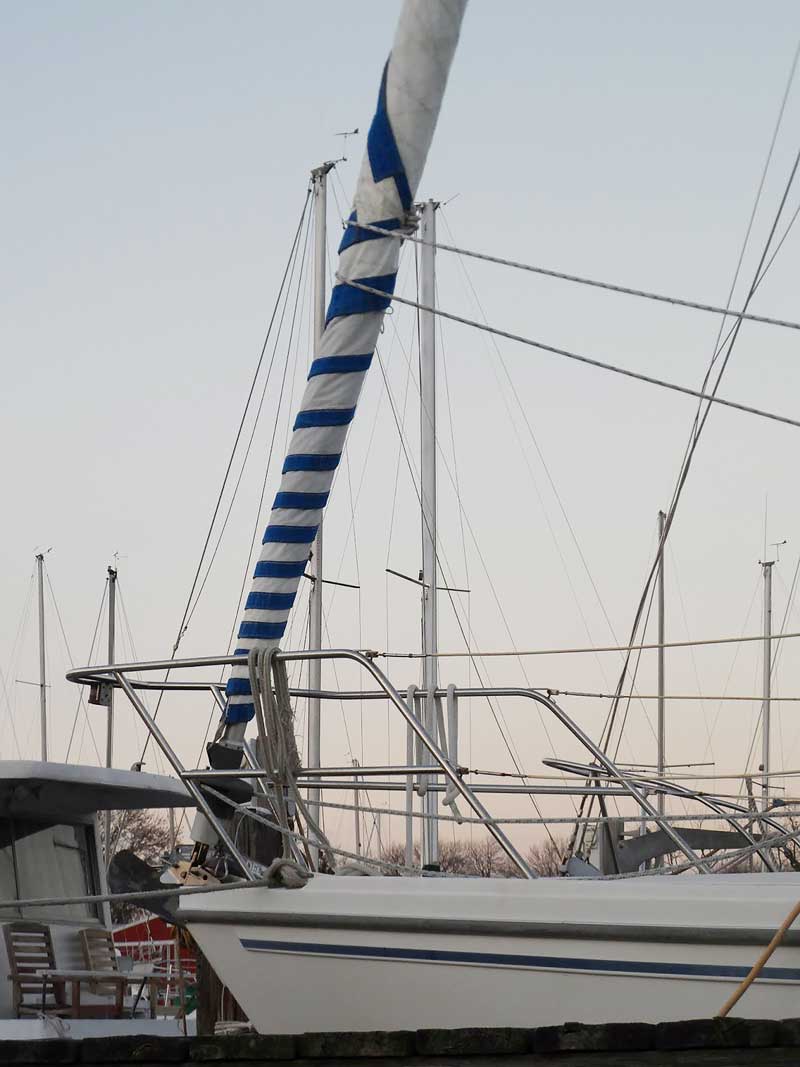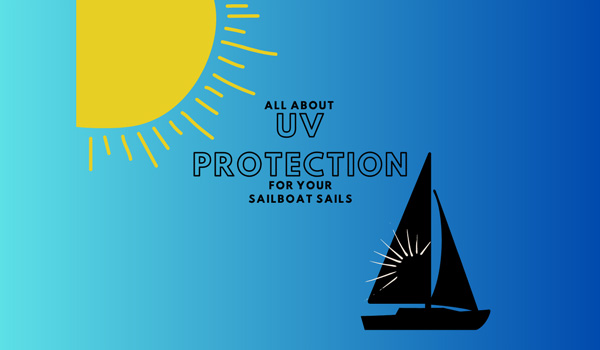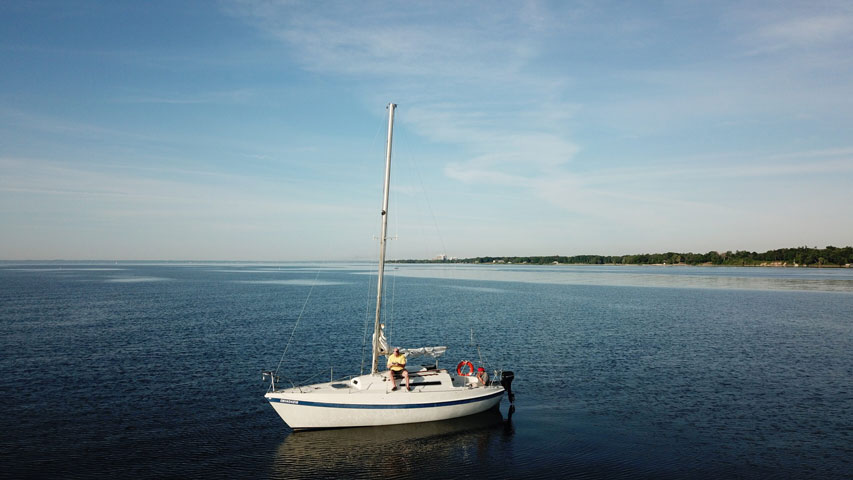As a sailor, you know how important it is to keep your sails in top condition. One of the most crucial aspects of sail maintenance is protecting them from the harmful effects of UV radiation. UV rays from the sun can quickly deteriorate sailcloth, causing it to weaken, fade, and ultimately fail. In this article, we’ll cover all you need to know about UV protection for your sailboat sails, including the different types of protection available, how to replace old UV, and more.
Types of UV Protection
There are several types of sacrificial UV protection available for sailboat sails. The two most common materials used for sailcloth are Dacron and acrylic. Both of these materials are susceptible to UV damage themselves, but they will weather the exposure far better than your sail – and can be replaced to prolong the life of your sail. Let’s take a closer look at these different types of UV protection and talk about the uses and strategic advantages of each.
Dacron UV Protection
Dacron UV Protection is a form of dacron that is specially treated to last longer in the UV and acts as a sacrificial strip for the dacron or laminate material that makes up your sail. The sacrificial strip adds an extra layer of protection against UV rays, which helps to extend the life of the sail. Alternatively, a UV-resistant thread can be used to sew the sail, which also helps to protect the sail from UV damage.
Acrylic UV Protection
Acrylic UV Protection, Acrylic is an alternative to dacron sacrificial strips. While they are heavier (not ideal for racing) cruisers love the longevity they provide by their increased UV resistance. However, they can still be damaged by prolonged exposure to the sun.
Depending on your goals for sailing, a sail consultant may recommend a specific type of UV protection. Different UV protection threads exist and have different prices and uses. You can speak to a sail consultant to determine which one is ideal for your sailing plans and how our packages align.
Can You Put UV on Spinnakers/Code Zeros?
Yes, you can put UV protection on spinnakers and code zeros. However, the process is a little different than with regular sails. Since spinnakers and code zeros are made from lightweight materials like nylon or polyester, a UV-resistant coating may be too heavy and affect the sail’s performance. Instead, a UV-resistant adhesive tape can be applied to the edges of the sail. This tape is lightweight and won’t impact the sail’s performance.
How to Replace Old UV
If your sail has an old or worn UV protection, it’s time to replace it. While you could have a professional do this for you, it’s possible to do it yourself if you have some sewing experience. First, remove the old UV protection from the sail. Then, measure the area that needs to be covered and purchase a new UV-resistant material. Cut the new material to size, but be careful with your sizing, if you cut too large you will add unnecessary weight, and if you cut it too small you will get candy striping. Finally, sew it onto the sail, and voila! Your sail has a fresh layer of UV protection.
- Remove the old UV protection from the sail.
- Measure the area that needs to be covered.
- Purchase a new UV-resistant material.
- Cut the new material to size, ensuring precision to avoid unnecessary weight or candy striping.
- Sew the new material onto the sail.
- Voila! Your sail now has a fresh layer of UV protection.
Using UV correctly
There are a few common mistakes that sailors should avoid when using UV protection for their sails. The first one to steer clear of is “candy striping.” This occurs when your either furl your sail incorrectly or the UV protection was installed improperly, resulting in striped patterns similar to a candy cane when the sail is furled. Not only does this look unappealing, but it also leaves parts of your sail exposed without proper protection. This can lead to weak points and UV damage in those areas. Additionally, it might give the impression that you are inexperienced when you’re at the marina. If you encounter Candy-striping you should adjust how you furl the sail to see if that resolves the issue. If not, you may be covered under your sail warranty, but make sure to communicate this issue early on. As unresolved it can lead to failure in the weave of the cloth.
The second mistake to be cautious about is furling the sail the wrong way. We came across an example of this on the Cruisers Forum, and it’s worth a chuckle. This is an instance of what you should NOT do and serves as a visual representation of “candy stripping.” However, in this case, the striping is caused by furling the sail incorrectly. Instead of having a broad protected strip on the alternate side, only a 1-2 inch section of UV protection is wrapped for support, leaving the rest of the sail vulnerable to damage.
To ensure proper UV protection for your sails, make sure to avoid these simple errors and always use your UV protection correctly. This way, you’ll keep your sails in good condition and avoid unnecessary damage.

Why a New Sail is Often Cheaper
Believe it or not, it can often be more cost-effective to replace your sail than to replace the UV protection. If your sail is old or damaged, replacing the entire sail will give you a fresh start with new UV protection. In some cases, a new sail with UV protection can be cheaper than purchasing UV-resistant material and paying for a professional to install it.
How to Tell When Your UV Protection is Done
Determining when your sail’s UV protection is done can be challenging, as it is not always visible to the naked eye. However, some signs indicate that it’s time to replace the UV protection on your sail.
One of the most visible signs of UV damage is discoloration on the sail’s leech and foot. These areas may appear faded or discolored, indicating that the UV protection has deteriorated. This is often the first sign of UV damage. However, some pigments last longer depending on where you sail (UV index) so check for other signs of UV damage including brittle fabric, holes, and tears on the sail’s surface.
It’s important to inspect your sailboat sails regularly to look for signs of UV damage. Here’s a checklist that can help you inspect your sails
- Faded or discolored fabric
- Stiffness or brittleness in the fabric
- Cracks or splits in the fabric
- Weak or frayed seams
- Torn or missing stitching
- Finger nail test.
Or here is an article that goes more in depth about sail inspection.
If you notice any of these signs, it’s time to consider replacing the UV protection on your sailboat sails. If you have any concerns about the condition of your sails, we are here to assist you. Reach out to one of our consultants who can answer any sailing questions you may have or simply listen to your sailing plans. Our goal is to have meaningful conversations about sails and help you make the most of your sailing season.
Safe sailing.



